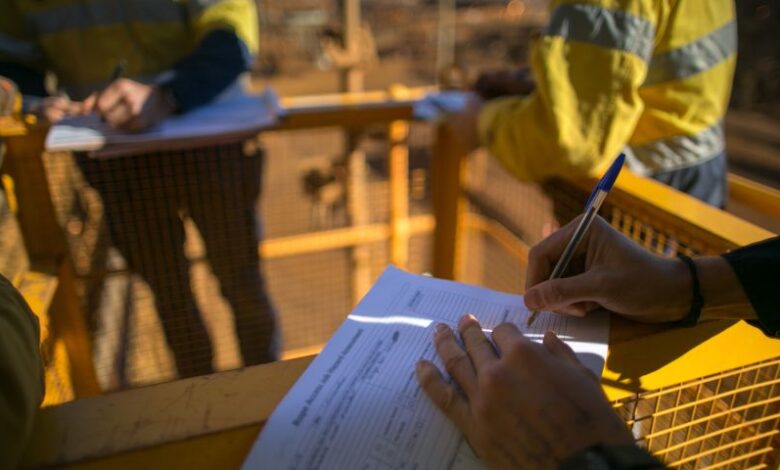Understanding the Key Stages of a HAZOP Study: A Comprehensive Guide

Hazop analysis plays a crucial role in identifying process hazards and reducing risk. Many companies overlook its importance, leading to costly accidents. This method systematically examines processes to find potential failures before they happen. It’s not just about ticking boxes; it’s about creating a safer work environment. By using Hazop analysis, businesses can proactively address issues and protect their employees and assets. The contrast between a reactive approach and a proactive one can make all the difference in safety and efficiency. Embracing Hazop means prioritizing safety and minimizing risks effectively.
Understanding HAZOP Analysis
Definition
HAZOP stands for Hazard and Operability Study. It is a structured method used to identify hazards in complex processes. This method helps teams understand how things can go wrong.
System Breakdown
Systems break down into smaller parts called nodes. Each node represents a specific section of the process. By examining these nodes, teams can find deviations from intended operations. They ask questions about each part. For example, “What happens if pressure is too high?” This approach helps in spotting potential risks.
Detailed Reports
HAZOP produces detailed reports that outline identified hazards. These reports include recommendations for hazard mitigation. Teams can use this information to design better controls. They focus on reducing risks in processes. The recommendations guide engineers and managers in making informed decisions.
Key Stages in a HAZOP Study
Defining Scope
The hazard identification process starts with defining the study scope. This step is crucial. It outlines what parts of the process will be analyzed. A team is then assembled. This team usually includes engineers and safety experts. They bring different skills to the table. Their combined knowledge helps identify potential hazards.
Systematic Analysis
Next, the analysis process begins. The team examines various nodes in the system. They use deviation keywords to guide their discussions. These keywords help identify risks linked to each part of the process design. For example, terms like “more,” “less,” or “as intended” signal possible deviations from normal operation. Each deviation can lead to different hazards. This systematic approach ensures that no potential risk is overlooked.
Documenting Findings
Documenting findings is vital for a successful HAZOP study. The team creates a detailed report that lists all identified hazards and their potential impacts. This report also includes safety recommendations based on their analysis. Implementing these recommendations can significantly reduce risks in the operation. Regular reviews of these findings keep safety measures up to date and effective.
Importance of HAZOP Across Industries
Safety Enhancement
HAZOP plays a crucial role in enhancing safety across various industries. It identifies potential hazards in processes. Experts analyze each step of the process to find possible failures. This proactive approach helps prevent accidents before they happen. For example, in chemical manufacturing, HAZOP can pinpoint risks like leaks or reactions that may cause explosions.
Operational Efficiency
Managing risks is vital for operational efficiency. HAZOP helps companies streamline their processes by identifying weak points. By addressing these issues early, businesses can avoid costly downtime. A well-conducted HAZOP study can lead to better resource management. This means fewer interruptions and smoother operations.
Incident Prevention
The contribution of HAZOP in preventing incidents is significant. Effective risk management reduces the likelihood of dangerous situations. Companies that implement HAZOP often see a decline in accidents and near-misses. For instance, the oil and gas industry uses HAZOP to ensure safe drilling practices. This analysis leads to safer work environments for employees.
In summary, HAZOP is essential for improving safety, maintaining efficiency, and preventing incidents in various disciplines. Its significance cannot be overstated as it serves as a fundamental part of risk management strategies across industries.
Overcoming Challenges in HAZOP
Complexity Issues
Identifying process hazards in large systems can be challenging. Complex systems often have many interrelated parts. This makes it hard to see all the potential hazards. Engineers may overlook smaller issues that could lead to bigger problems.
Resource Allocation
Limited resources can also create challenges. Teams may not have enough time or staff for thorough analysis. This can result in incomplete hazard identification. Proper allocation of resources is crucial for effective risk management.
Team Collaboration
Improving team collaboration helps overcome these challenges. Regular meetings can keep everyone on the same page. Encouraging open communication allows team members to share insights. Using collaborative tools can enhance teamwork during the analysis process.
Periodic Reviews
Conducting periodic reviews is essential. These reviews ensure that HAZOP processes remain effective and relevant. Updating safety procedures helps identify new process risks as they arise. Regular assessments strengthen process safety management programs.
Training and Development
Investing in training improves understanding of HAZOP methods. Teams become more skilled at identifying hazards. This leads to better decision-making in risk management.
Final Remarks
HAZOP analysis is crucial for spotting process hazards and cutting risks. By following key stages, you can uncover potential issues and ensure safety. Its importance spans various industries, making it a must-have tool in your risk management toolkit.
Don’t let challenges hold you back. Embrace HAZOP to strengthen your safety measures. Take action now—conduct a HAZOP study and protect your operations. Your team and stakeholders will thank you for it.
Continue to read more articles like this on ATNews.





